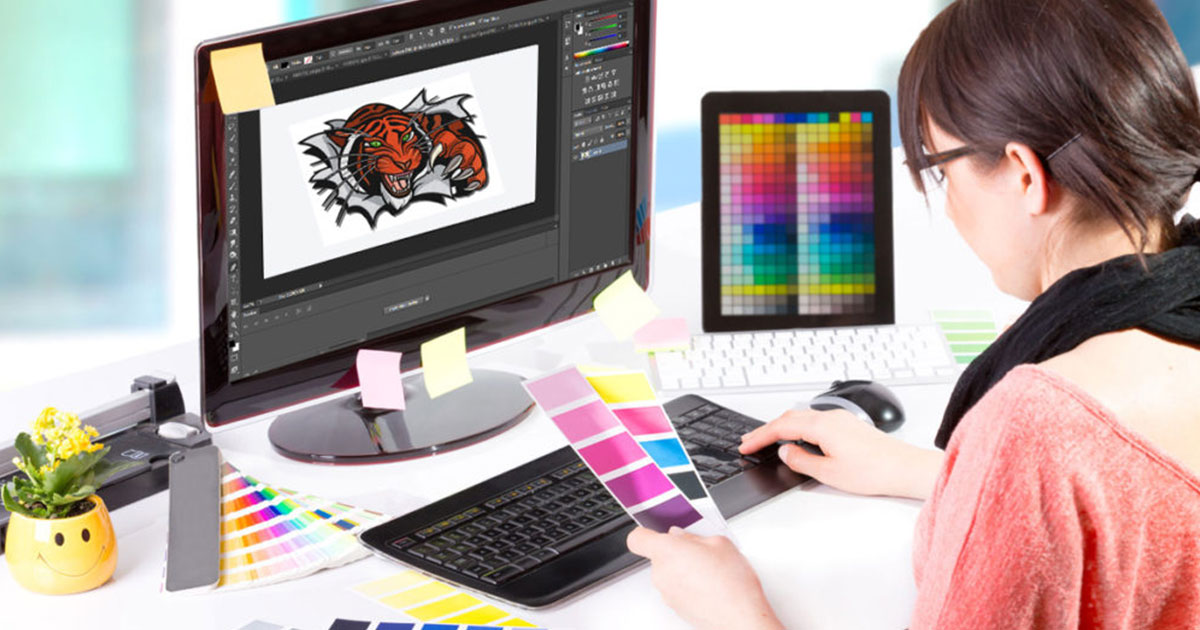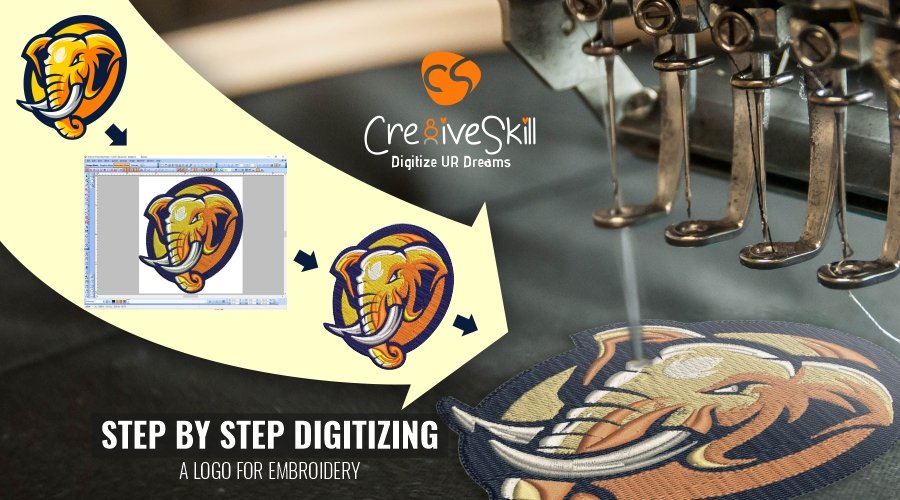Explore Various Sorts Of Embroidery Digitizing Techniques
Embroidery digitizing has advanced considerably over the years, using a myriad of strategies to bring designs to life in the digital realm. The realm prolongs to much more innovative strategies like photorealistic needlework digitizing and the remarkable world of 3D embroidery digitizing.
Traditional Hand Needlework Digitizing
Standard hand needlework digitizing involves the process of converting complex hand-stitched styles right into digital formats for device embroidery. This technique requires competent artisans to carefully evaluate the handmade design and after that make use of specialized software program to recreate it in an electronic style. Each stitch, color, and information has to be very carefully translated to ensure that the significance of the initial hand embroidery is preserved in the electronic variation.
One of the key obstacles of standard hand embroidery digitizing is capturing the intricacies and subtleties of the handmade style. Digitizing for Embroidery. Artisans must have a deep understanding of various embroidery techniques, such as satin stitch, chain stitch, and French knots, to properly duplicate these methods in the digital realm. In addition, they need to have an eager eye for information to guarantee that the digital layout preserves the same degree of creativity and craftsmanship as the initial hand-stitched item
Punching Method
To effortlessly shift from traditional hand needlework digitizing to the boxing method, artisans have to currently concentrate on transforming the complex digital designs into instructions that needlework devices can interpret. The boxing method involves making use of specialized software application to develop electronic documents that include commands for the needlework device to follow. This procedure requires a deep understanding of not just the style itself but additionally the abilities and limitations of the embroidery maker.

Auto-Digitizing Software Program Programs
Embroidery digitizing has actually been changed by the advent of auto-digitizing software programs, supplying craftsmens with sophisticated devices to transform electronic layouts right into needlework machine instructions effectively. Auto-digitizing software application make use of formulas to assess digital images or vector files and produce needlework styles instantly. These programs permit fast and exact conversion of intricate styles right into stitch patterns, conserving effort and time for embroiderers.
One of the key advantages of auto-digitizing software application is its straightforward interface, making it accessible to both novices and experienced digitizers. These programs frequently include attributes such as stitch editing and enhancing devices, thread color matching, and the capacity to sneak peek the last stitched style. Furthermore, auto-digitizing software application can take care of intricate layouts with several colors and complex details, creating top notch embroidery data appropriate for different clothing and textile tasks.
While auto-digitizing software program uses benefit and effectiveness, it is important for customers to recognize the limitations of automated digitizing. Fine-tuning and Website manual adjustments may still be required to attain the wanted embroidery quality, specifically when managing complex or special designs. By leveraging the capabilities of auto-digitizing software along with hand-operated digitizing methods, artisans can improve their embroidery digitizing process and create magnificent stitched pieces.
Photorealistic Needlework Digitizing
Utilizing innovative digital imaging techniques, achieving photorealistic lead to embroidery digitizing has actually become a desired skill amongst contemporary craftsmens. This strategy involves converting high-resolution pictures into detailed stitch patterns that carefully imitate the original style, leading to needlework items that display realistic information and deepness.
To achieve photorealistic needlework digitizing, craftsmens should have a keen eye for information and an extensive understanding of how various stitch types and thickness can impact the last published here outcome. By meticulously mapping out each color and color in the picture, embroiderers can create an electronic data that overviews the embroidery device to reproduce the subtleties of the original image properly.
Photorealistic needlework digitizing is especially popular in creating customized styles for clothing, home design, and art pieces where catching the essence of a photo or artwork is vital. This strategy permits craftsmens to change memories, landscapes, portraits, and elaborate artwork into spectacular embroidered masterpieces that showcase a blend of conventional workmanship and sophisticated technology.
3D Embroidery Digitizing
With the development of electronic imaging strategies in attaining photorealistic cause needlework digitizing, the expedition of 'D Needlework Digitizing' provides a new measurement to the details of layout duplication. 'D Embroidery Digitizing' refers to the three-dimensional digitizing technique that includes deepness and appearance to embroidery designs, producing a more realistic and visually attractive end read the article product. This technique uses software application that simulates the effect of light and shadow on the embroidery design, improving its general visual impact.
Among the vital benefits of 'D Embroidery Digitizing' is its capacity to make styles look more lifelike and dynamic. By including depth to the embroidery style, the end product appears more practical and exciting (Digitizing for Embroidery). In addition, this strategy permits more creative freedom in design implementation, making it possible for embroiderers to trying out various textures and impacts that were previously testing to attain
Final Thought
